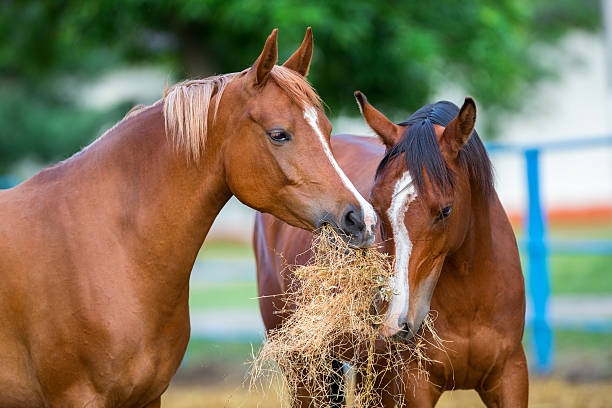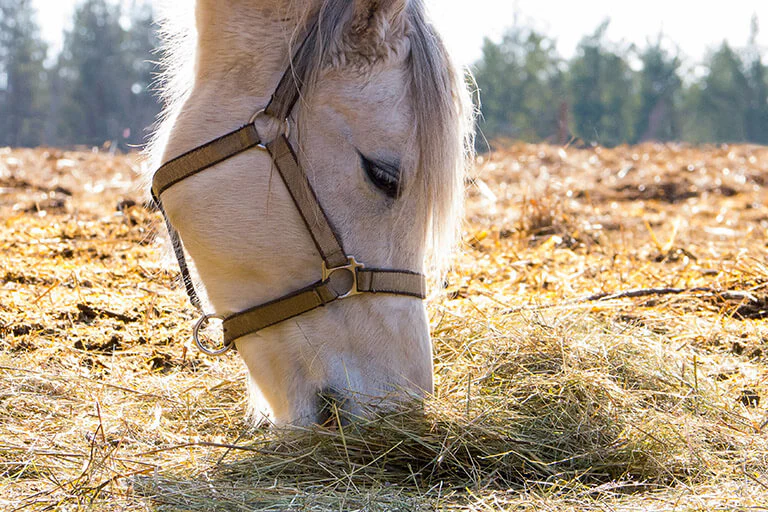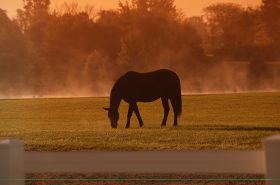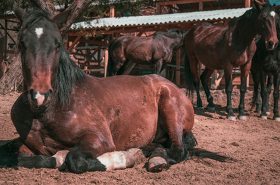Though many horse owners may fret about which commercial feed to give their horse, it’s important to remember that forage is the most important part of any equine diet.

Yes, bagged feeds can provide energy and calories, as well as vitamins and minerals for horses, but forage is what best supports their gut health. In fact, the average 1,000 lb. horse will need to eat approximately 15-20 pounds of forage per day.
For most horses, pasture grass and/or hay are sufficient in meeting their forage needs. However, with dental issues, a lack of good pasture, or limited hay supplies, forage-based feed products can be a good option. Forage-based feeds can also be swapped for grain for easy keepers.
Hay Cubes
Hay cubes come in a variety of different forages, but the two most popular types are alfalfa and timothy. Cubes can be a great way to feed older horses who may have trouble chewing hay, but cubes must be soaked and soaked well. Otherwise, they can cause choke. As with hay, weigh your pre-soaked cubes to ensure you are feeding enough.
Hay Pellets
Though cubes are preferable due to the fact that they contain longer-stemmed forage, hay pellets are another option for a forage-based feed. Pellets can be fed to easy keepers if you simply need something low in sugar to add their supplements to. However, keep in mind that pellets should also be soaked to avoid choke, and they usually require a longer soaking time than cubes.
Haylage
Haylage is a type of silage that is cut and baled while the grass is still at an early stage. It contains a higher moisture content than hay, at somewhere between 15-40%. When baled, haylage is wrapped in plastic so it can ferment and be preserved. However, due to the higher amount of moisture in haylage, you will need to feed more of it by weight when compared to hay. Haylage can be a good option for horses with respiratory issues as it is dust-free.
Chopped Hay
Chopped hay is another forage-based product that may be good for horses with dental issues. Like hay cubes and pellets, chopped hay most often comes as alfalfa, timothy, or a mix of the two. Chopped hay can also be used to help extend limited hay rations or can be fed to easy keepers in place of grain.




